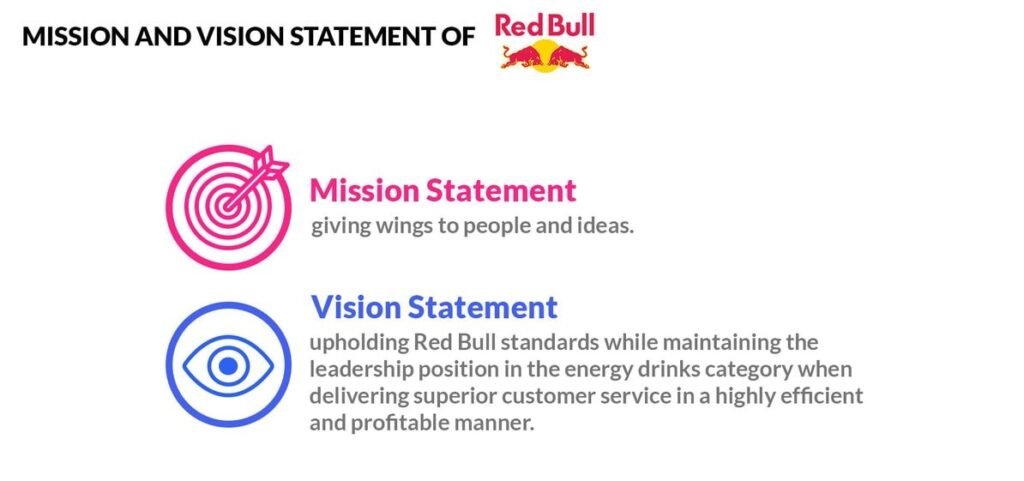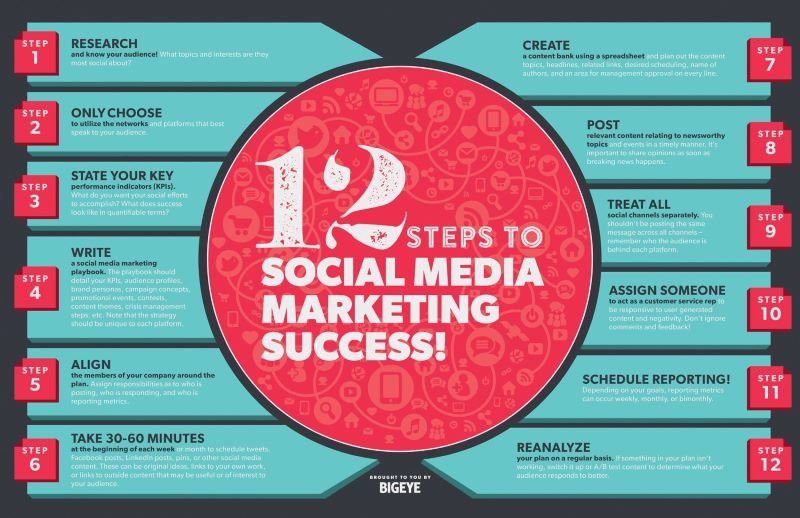
Social media serves as an invaluable tool for engaging with your audience. The diverse array of platforms available provides marketers a strategic avenue to enhance brand visibility, gain profound insights, and cultivate meaningful connections with prospective and current clientele.
However, achieving success on social media necessitates meticulous planning. Conduct thorough research, leverage key platforms, stay informed about competitors’ strategies, and curate compelling content tailored to resonate with your target audience.
Whether you’re grappling to make an impact and garner engagement on social media, or you are merely beginning to explore a new platform, now is the opportune moment to devise a robust social media plan that elevates your endeavors and posts to unprecedented levels of success.
- Know your brand
- Understand your audience
- Know your social media channels
- Conduct a competitive analysis
- Set up and optimize accounts
- Create mission statements
- Establish metrics
- Create and schedule content

1. Know Your Brand
This step can be harder for smaller companies that haven’t given who they are much thought. If you sell pizza, you are a pizza joint. If you are a printer, you provide printing services. Right? Well, yes and no.
Creating a business today has to go beyond the products and services you offer. You have to create a brand that will attract people to your services because that’s what sets you apart from the rest.
Consider all aspects of your business and look for things that are uniquely yours. If you are a pizza joint, your unique selling point might be that you specialize in locally-sourced ingredients and want to keep your business sustainable. If you are a printer, you might be committed to the environment, and so you use speciality inks and recycled paper.
Define your brand, and you will be on your way to creating excellent (and relevant) content.
2. Know Your Audience
Now that you have a better idea of who you want to be, you can consider targeting a more specific audience. Already, you can see how the first step ties into the second.
Look at creating a more detailed buyer persona for your audience and focus on what will attract them to your social media pages. Some things to consider when looking at your target audience are:
- Age
- Location
- Job title
- Income
- Pain points or challenges (that your business can solve)
- Interests or hobbies
- Values or goals (to tie into social issues they care about)
- Most used social network
3. Know Your Social Media Channels
You have to know where you are and how you are performing on social media. That means doing an audit of your social media presence. Here’s your social media audit checklist:
- Which platforms are you using?
- Are your pages fully optimized using platform features such as photos, cover images, bio/about, etc.?
- Which pages are getting the best results?
- What posts get the best results (e.g., likes and shares)?
- Who is connecting with you?
- How frequently are you posting?
You want to establish what is working and what is not. You can also take a look at what pages are most challenging to maintain compared to the results – in other words, are they worth the effort or could you use your time elsewhere?
There might be a need to take down some of your pages to focus on the social media channels that make the most sense for your brand. This means determining what social media platforms are used by your audience and ideal customer.
To help you decide which pages to shut down ask yourself two questions:
Is my ideal customer likely to be using this platform?
Have my efforts helped me achieve any of my business goals?
If you answer NO to either or both, chances are you could focus on other platforms to build your presence on social media.
One more important aspect of an audit is to look for impostor accounts. It is not uncommon for criminals to set up fraudulent accounts for several suspect purposes. Imposter accounts can be harmful as they can use techniques that can blacklist you from searches. If you find anything that could be an imposter account, report it right away.
4. Conduct a Competitive Analysis
A competitive analysis will give you insight into more improvements you can make to your social media pages. You can see where competitors hit the mark and where they fall short.
Looking at competitors also helps you see what the industry is doing so that you know where there might be opportunities to be unique, as well as areas you will have to cover on your pages.
You can also look for dominance. A competitor might be killing it on Instagram but be doing nothing on TikTok. That leaves another opportunity for you to dominate. All of this information will help you fine-tune your social efforts to outdo the competition.
5. Set Up & Optimize Accounts
Use your audit findings to look for opportunities to improve your existing profiles. Review every feature available so that there are no holes in the pages you have created.
Make sure you have optimized your pages with contact info, company history and information, product and service descriptions, and good use of photos and video when you can.
Always verify accounts to make sure you lessen the chance of imposter accounts popping up.
If this is your first stab at social media, set up your pages using the same premise to optimize your landing pages.
You can use a social channel tracker which includes audience, focus, content and format to build a comprehensive plan.

6. Create Mission and Vision Statements
It is not enough to create a generic mission statement for your social media pages. Instead, you should create a mission statement for each channel.
That will help you determine what you want to use each platform for from customer service (WhatsApp) to creating a community (Threads).
You should consider who your ideal customer is and use their needs and pain points to focus your mission statements. You can write a mission statement by:
- Explaining what your company offers
- Relaying the core values of the business
- Showing how your offering aligns with your values
From your mission statement, you can create an aspirational vision statement that reveals the future mission or vision for your brand and its potential impact on the world. Here’s an example from Red Bull for inspiration.

Always make sure that you focus on creating content that is mission appropriate. That keeps the lines from blurring, and you won’t begin to lose people by sending mixed messages. For example, if you use Facebook to answer customer questions, avoid filling the feed with promotional info.
7. Set Up Metrics
For companies that allocate budget for social media marketing, tracking post and campaign performance is essential for growth. Some of the most important metrics include:
- Engagement rate
- Conversion rate
- Amplification rate
- Reach
- Impressions
- Video views
- Click-through rate
- Audience growth
- Cost per click
- Brand mentions
- Sentiment
- Total shares
With the right metrics, you can tweak your content and even rethink your strategy. For example, if you continuously seem to miss the mark over a long period of time on a certain page, the platform might just not be working for your brand.
You can also determine where your best efforts will get the best ROI. Look beyond vanity metrics. Look at leads, web referrals, and the all-powerful conversion rate.
Continue to experiment but know where your value is. That way, you can increase posts that tend to get the best results based on your mission statements. In fact, it is not unheard of to change a mission statement if the results are great but not related to the statement you had in mind. If you were using X for brand awareness but more people seemed to be looking for customer service, switch your focus to meet expectations.
8. Schedule Engaging Content
All of the other steps of your plan should help put you in a better position to plan your content. No matter how strong your social media plan is, if you don’t follow it all up with engaging content, your social efforts will fail.
Create a social media content calendar to show what you want to publish, on what date, and on what channel. Mix things up by using images, link sharing to blog posts, videos, and clever text to keep people engaged.
Your calendar should be manageable for your team and take into consideration optimal posting times.
Come up with a balanced mix based on your mission statements. There are some formulas to consider. Perhaps the simplest is the 80/20 rule, which is 80% dedicated to information, education, and entertainment, and 20% is dedicated to selling.
There is also the rule of thirds idea, which provides one-third to shared ideas from thought leaders, one-third to personal interactions with your followers, and one-third to your business to convert and create profit.

All in all, you have many different avenues to generate strong content including:
- Leverage your blog content
- Repurpose other marketing efforts such as landing pages, videos, offers, etc.
- Post and share industry news
- Use influencers
- Post user-generated content (UGC)
- Share tips and tricks such as recipes or unusual ways to use your products
- Ask followers questions to generate conversations
- Use hashtags to help generate more UGC
McInerney believes that happy customers are your best asset so it’s important to look at the top ten people that consistently engage with your content and nurture them as your advocates.
She also recommends seeking out influencers that can help to share and create new content. This can help to expand your reach and drive brand awareness.
Source: Digital Marketing Institute
- August 9, 2024
- By:chinny okoye
- Categories:Social Media Marketing
- no comments

